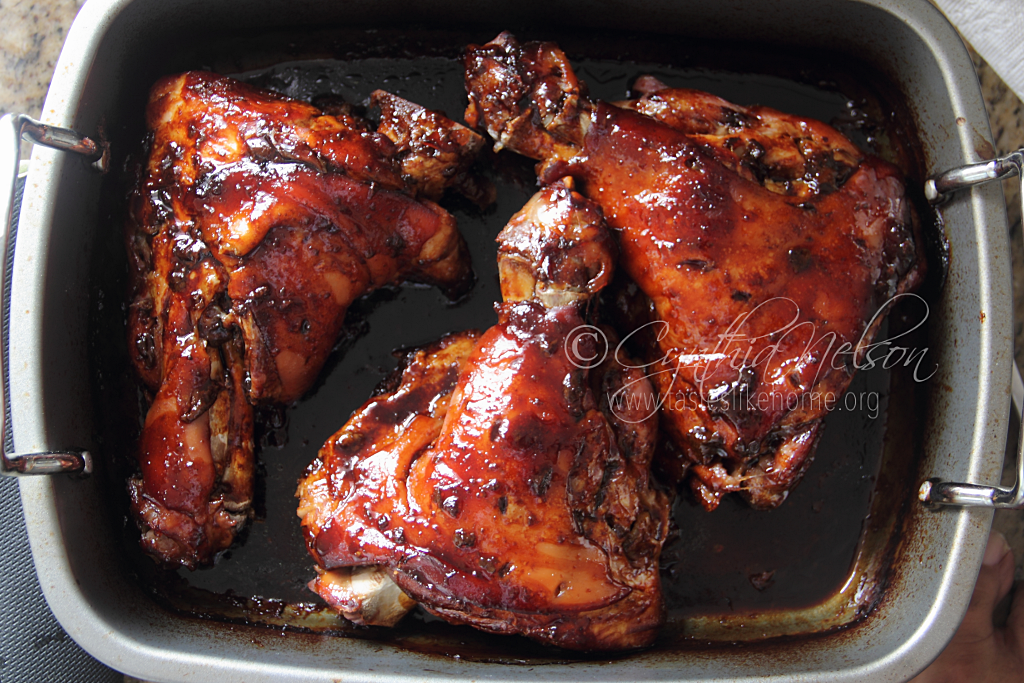Many holiday meals are about the big and best cuts – prime rib, crown roasts and whole legs – of pork, beef or lamb. Apart from generally being expensive, the prices of these cuts rise around this time of the year as demand is high. This year, why not save some money by trying a cut that is not only less expensive, perfect for a set-it-and-forget-it kind of cooking, but also tastes incredible? Skip the legs, get the shanks!
The shank is the front forearm of an animal such as a pig, lamb, goat or cow; some places would have it labelled as, or call it, the shin. It is found just below the shoulder and is a tough cut because of all the muscular work it performs during the animal’s life. However, the toughness offers up a lot of meaty flavour that gets released through the low, slow cooking, from which this cut benefits. The meat becomes tender as all the muscles break down from the gentle cooking; the bone it surrounds has marrow that melts making the entire dish rich, especially the sauce/gravy from the long cooking.
While today’s dish is referring specifically to baked pork shanks, the same approach can be taken for lamb or beef shanks, however, the cooking time would vary. I’ll get to that later. To make this dish, I want you to think of making baked chicken, only you are cooking the meat longer and at a lower temperature.
Here’s what to get and what to do.
Tell the butcher you want shanks and explain (that is if they do not already know) where the cut of meat is to come from. Bear in mind they may call it or know it as something else. With technology these days, it is easy to shop and get what you want, and at the same time, you would be educating yourself and your butcher. Very often I save photographs of various cuts of meats and take them to my butcher so that he or she knows what I am talking about and what I need. Feel free to do the same. If you have a mobile device, whether it’s a phone or tablet, put it to use, other than for taking selfies (laugh).
Clean your meat, however you do, but please, there is really no need for soaking down in lime and salt. Rinse the meat well and be sure to pat dry. Now, you want to make a marinade to season the meat. Honestly, my marinade consists of a little bit of all sorts that are in the cupboard and refrigerator. Some things that would be in my marinade: green seasoning, soy sauce (regular, dark and sweet), Worcestershire sauce, oyster sauce, a little black or malt vinegar, mustard and pepper sauce. Rarely do I need to add salt because there is already enough sodium in the regular and dark soy sauce as well as the oyster sauce. However, once I whisk everything together, I do taste the marinade and, if necessary, I’d add some salt. I do not measure anything; it’s a little of this and that and I adjust as I taste the marinade.
Shanks, as I said, are thick tough cuts, so I take a paring knife and poke holes or make tiny incisions all over the meat so that the marinade can get in and season the meat on the inside too. Once that is done, pour the marinade all over the meat, and with clean hands, massage it into the meat, turning the meat a couple of times. Cover the meat in the bowl tightly and refrigerate or transfer to a large clean plastic bag (marinade too), secure tightly, place on a large plate or platter and refrigerate. Let marinate overnight or for as long as 16 to 18 hours.
Bring the meat up to room temperature before cooking. This is important to ensure even and proper cooking. Transfer the room temperature meat, including all the liquid of the marinade to a baking dish/pan – the size would depend on how much meat you are cooking. Pour 2 to 3 cups of water around the pan but not on top of the meat, shake the pan gently (if you can) or use a spoon to gently mix the water the with marinade. I won’t recommend using wine in this case because of the different types of sauces used for the marinade, but this is your dish right so make the marinade you want and use whatever liquid you prefer.
Cover the entire pan tightly with aluminium foil. The edges of the pan need to be tightly sealed while the top can have some room so that the foil is not touching the meat, enabling steam to circulate at the top of the meat. Transfer the pan to a preheated 325 degree F oven for its long slow cooking. For pork and beef shanks, I average 45 minutes per pound, therefore, if cooking 5 pounds, bake the shanks for 3 hours and 45 minutes. For lamb shanks, I recommend 35 minutes per pound. After the recommended baking time, carefully remove the foil from the pan and baste the meat with the juices. At this stage you should see the meat pulling away from parts of the bone and a knife should insert easily into the meat. Remove the foil, raise the heat to 400 degrees F to get some added colour. When done, remove the pan from the oven, cover loosely with foil for least 20 minutes before serving.
Happy Holidays!
Cynthia
cynthia@tasteslikehome.org

